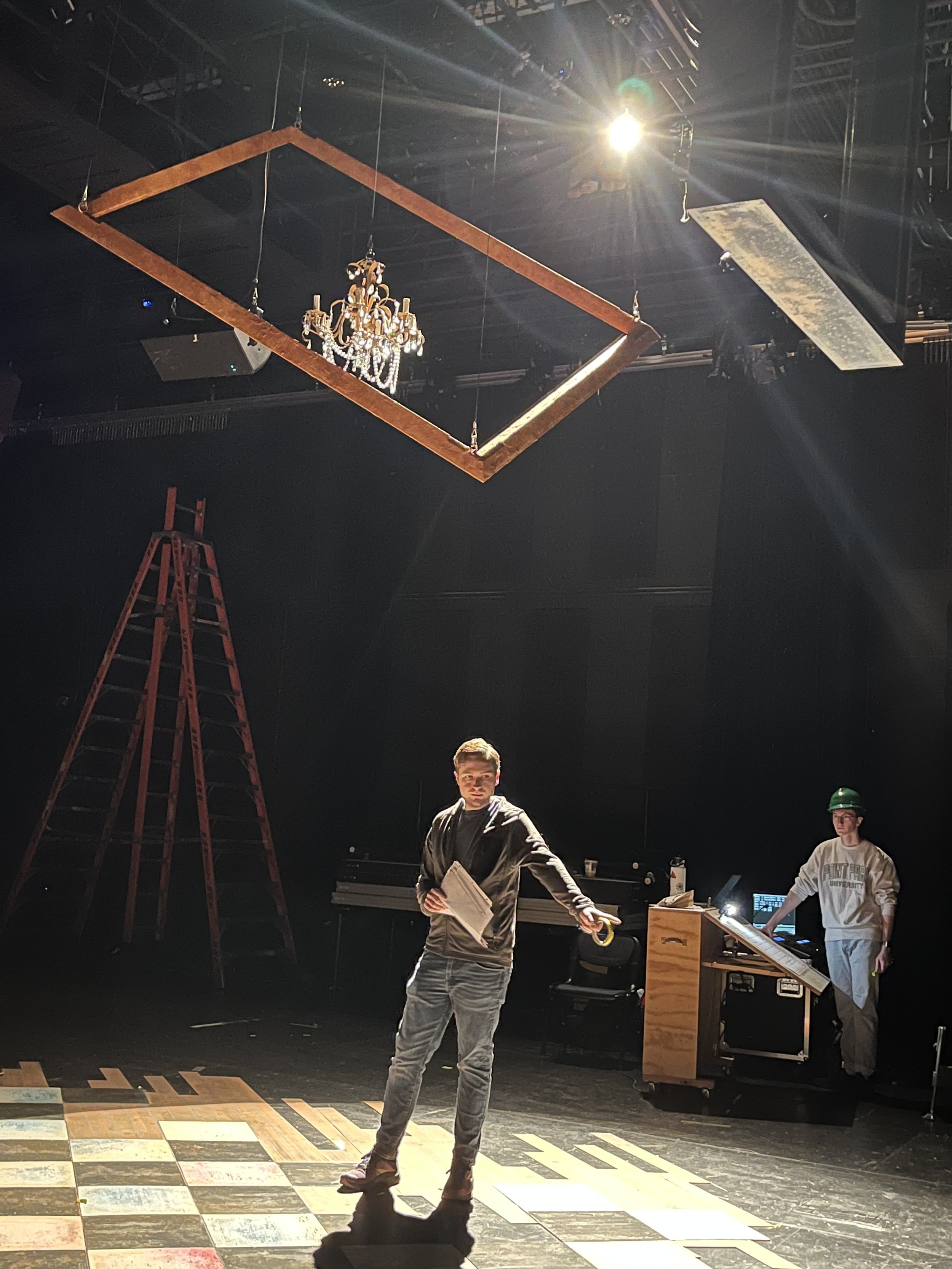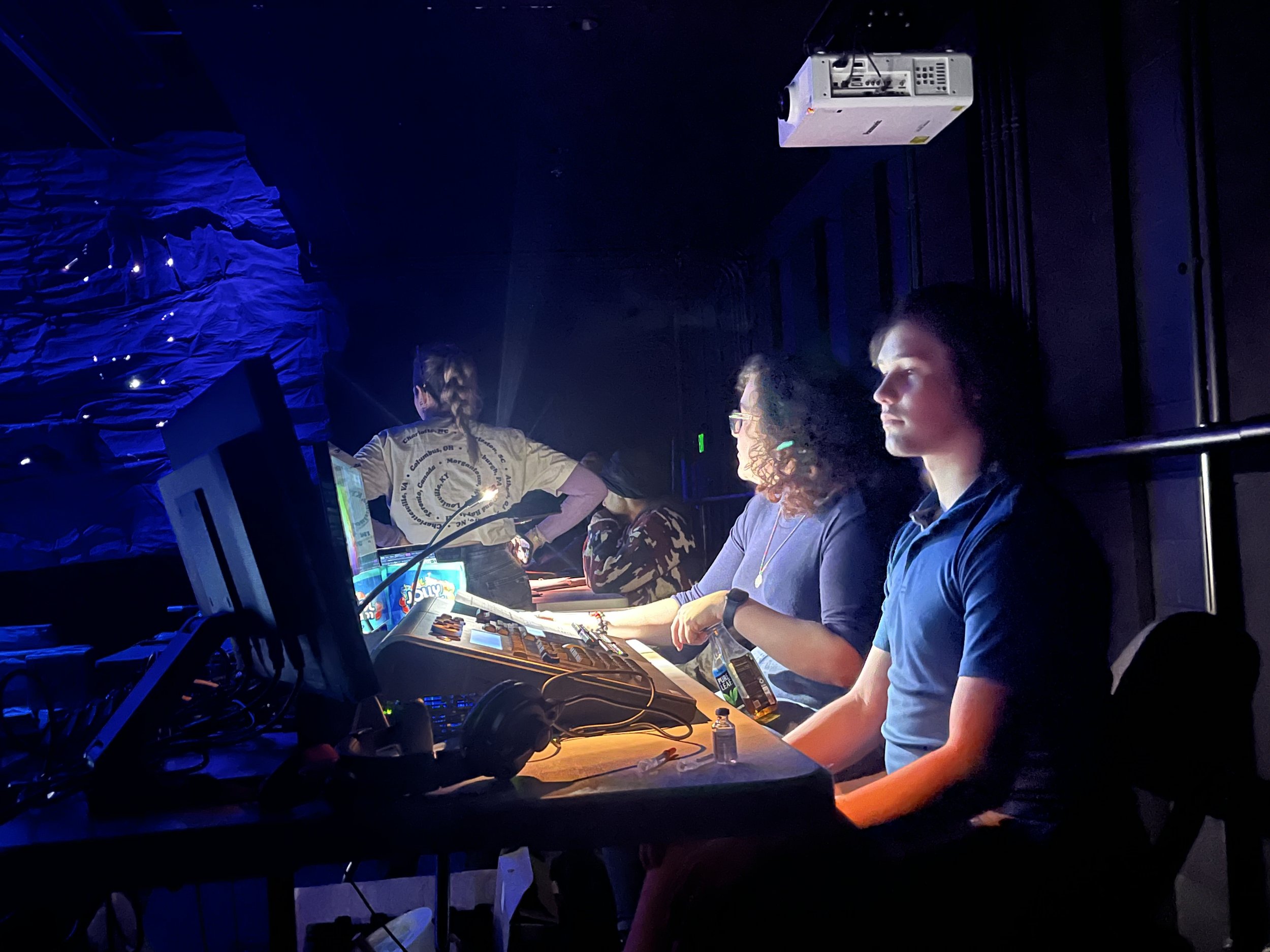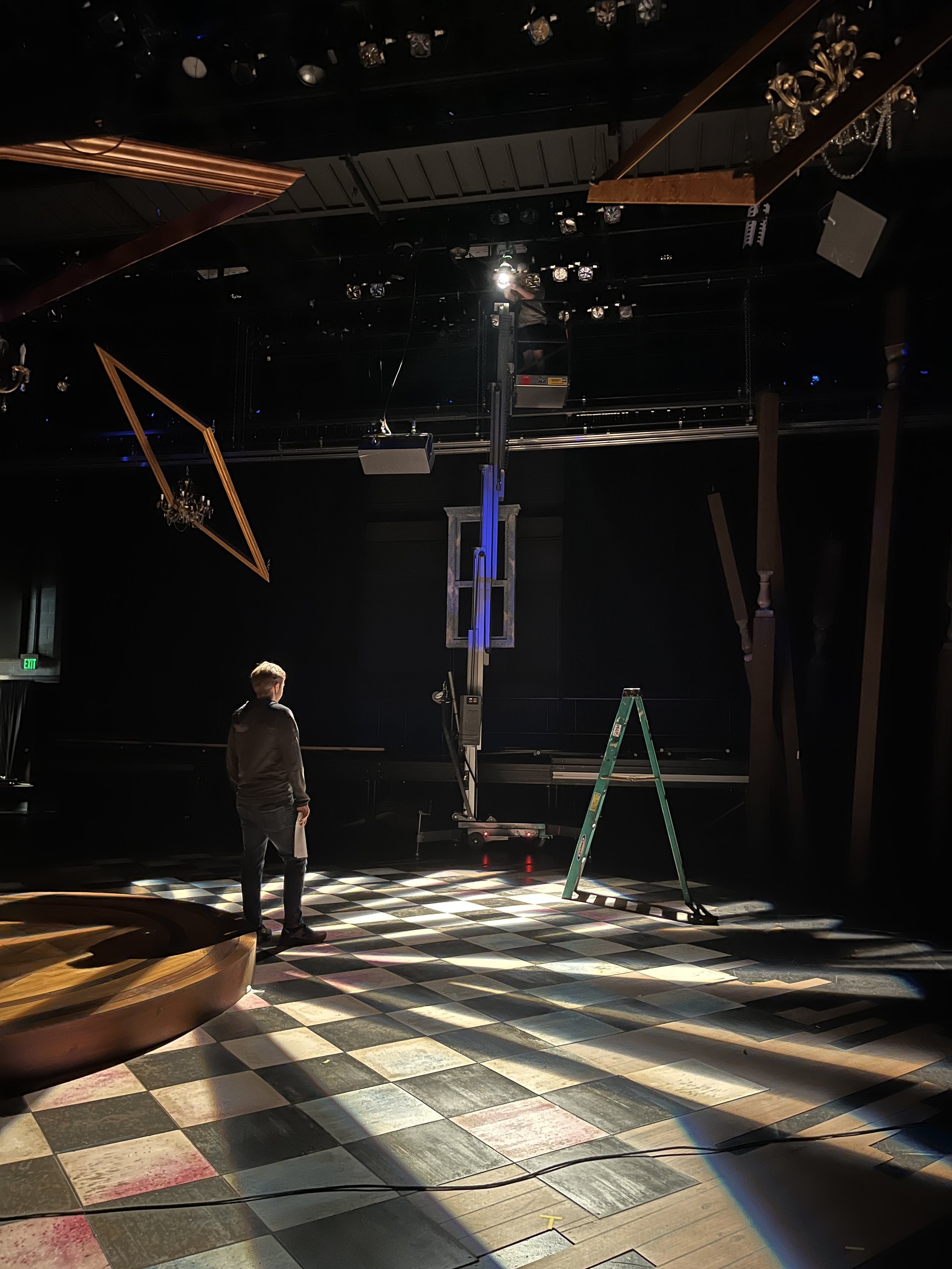Student Production Work
When I first arrived at Point Park University, most lighting design students were able to be the lead designer on a production in their final semester. Through careful guidance and mentorship, I have built the lighting designers’ skill sets by pairing them as assistants to professionals who will push them, by encouraging participation in student-run theatre, and by hands on learning at every opportunity. My design students are now ready for a lead design in their junior year, and they graduate with three or four full productions as lead lighting designer. Most of them have also designed the Student One Act Festival, several Student Choreography Projects, and one or two Bridges Shows (the student run company).
They are all doing incredible work as designers and technicians, and many work professionally even before graduation. Here is a sampling of their design work while I have been at Point Park:
Design Work
Rent - lighting design by Theodore Lau
Theodore wrapped up his time at Point Park with a giant musical: Rent. This was particularly challenging for Theodore because he excelled in being able to plan ahead and carve out stunning looks based on carefully thought out design concepts. However, musicals require a speed that was not his strength. We discussed this well in advance and made a plan as to how he could play to his strengths and allow them to help him face these challenges. He was extremely well prepared going into tech, but the first two days were difficult. He stuck with it, relied heavily on his assistant to help handle two spot operators who did not want to pay attention, and stayed focused on working more quickly.
For this production, Theodore had requested an outside mentor (I had mentored his past five production assignments), and we paired him with the talented and education-oriented Annmarie Duggan. I was out of town designing a show during part of his tech process, so this mentor swap worked well. I spoke with Annmarie every night, discussing the challenges Theodore was facing and making a plan for how to help him continue to work faster while staying true to his design. In the end, he had a hugely successful show where he made great leaps and bounds in his skill sets. He did get faster at making decisions. He gave a lot of attention and thought to using his assistant well and to offering her valuable opportunities, and he communicated well with his production team.
For final designs, Theodore created a visual research packet complete with renderings to best communicate with his director.
Final Design Presentation: Click Here
Theodore drafted the show in Vectorworks 3D to carefully calculate the lighting angles in relationship to the scenic elements and head off any issues during focus.
Production Photos
Men on Boats - lighting design by Madelyn Miessmer
In her junior year, Madelyn designed her first mainstage show: Men on Boats. She had designed several semesters of the Student One Acts, many Student Choreography Projects, and had assisted me and an outside professional designer. She was ready for a design where she could demonstrate her strong communication skills with a director and practice translating her design ideas into a light plot.
Madelyn created a detailed research packet to communicate her design ideas to her director. She set up several meetings throughout the process and talked through the script with the director and scenic design so everyone was on the same page as to what each scene would look like, what drove the emotions in the scene, and where actors would be on stage.
Final Design Presentation: Click Here
She focused on improving her drafting skills on this show, and the intricate set with multiple levels and a large backdrop gave her a good challenge. We worked on making sure her front angles wouldn’t blind the audience while still lighting actors’ faces
Production Photos
Technical Skills
Photometrics and Focus Skills
Lighting design involves considerable physics and math. As designers, we create a visual language that will best tell the story, but we do not exist on stage alone. There are scenic elements, costumes and fabrics to work with, speakers and the rhythms of music to match, and of course, the actors themselves. To physically implement our lighting aesthetic, we have to take into account where everything else is in the space. We have to plan for anything hanging, how far away the scenery is from where we hang the lights, what angles will best show textures and faces, etc. Planning for these angles, throw distances, and hang positions involves Photometrics - the math behind lighting.
Many lighting programs teach students to figure out what lights they need and where they should go solely based on previous experience. “Last time I used this size light, so that should work again here.” I believe students should know how to properly plan ahead, especially when they are in a space they have never worked in before, or when they are working with new equipment. Knowing how to calculate throw distance and beam angles will support each student’s success on future shows. I ask all lighting students to be involved in the drafting and photometrics of every show they assist on, starting their Sophomore year. Once they are ready for their own designs, they have already had experience drafting, focusing, and trouble shooting. This experience allows their own process to be smoother and they learn more advanced approaches to the looks they want.
ETC Eos Family Lighting Consoles
As a lighting designer, it is important to know your tools and how to use them. We are often communicating with lighting programmers and board operators, and we need to use the language that the console uses. So I believe it is important for the lighting students to know how to set up, program, and run their own lighting consoles. This is also a skill that is very helpful when they graduate, allowing them to apply for jobs as board operators, assistants, and electricians.
Students program for each other during programming sessions and technical rehearsals. As a workshop, I brought in the Lighting Supervisor from Lincoln Park School for the Arts who talked to the lighting students about setting up a programming file for a national tour.
Student Lighting Supervisor Role
Along with sharpening their design skills, it is vital that lighting students know the technical tools necessary to implement a show. I ask all lighting students to spend at least one semester as Assistant Lighting Supervisor, and one as Lighting Supervisor for a show. This ensures they gain experience interpreting another designer’s work, organizing and budgeting a show, ordering gear and expendables, planning hang and focus, and running a crew. This prepares them to understand what it means when they ask for things as a designer, and it ensures much stronger communication and a collaborative team attitude.
Acting as a lighting supervisor also allows each student to work on leadership skills, which I believe sets them up for success in the industry. Students have to practice patience and understanding with newer crew members; learn how to teach process and procedures; and work on a variety of communication techniques with fellow students, shop heads, and professional designers and directors. They make huge leaps and bounds in commanding a room and leading by example.













































